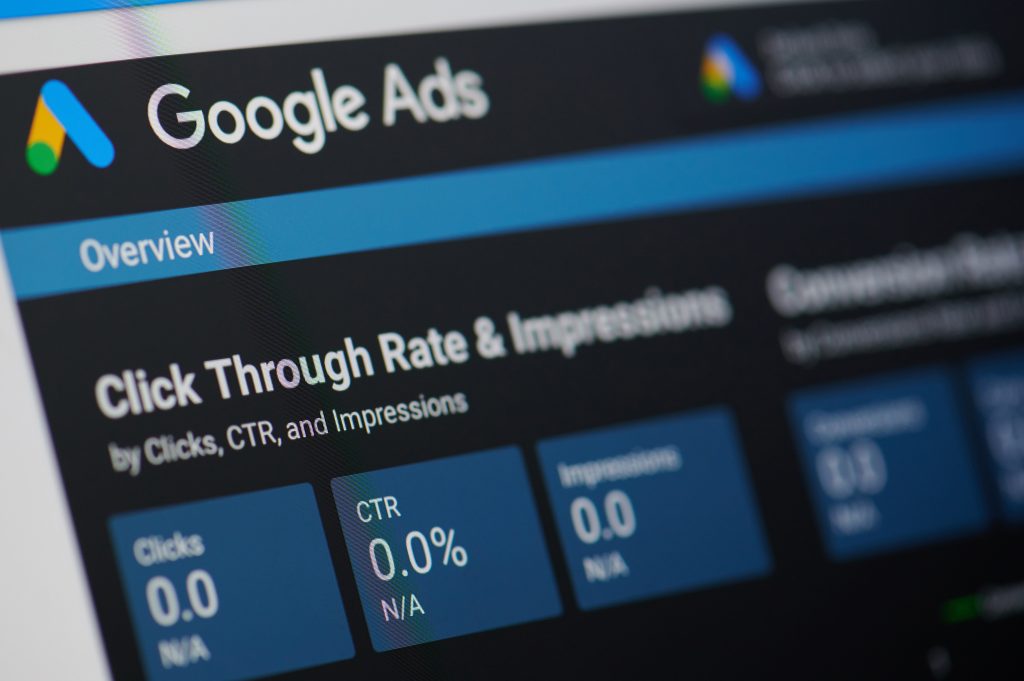You’re here for a reason – your Google ads aren’t producing results like you thought they would. You may think you set everything up correctly, but if your ads aren’t converting, there are several reasons why.
Keep reading to learn what those reasons are and their solutions.
10 Reasons Your Google Ads Aren’t Converting
Your Google ads may not be converting for reasons ranging from technical errors to strategic blunders. Here are 10 reasons why your ads may not be converting and ways to solve them.
1.) It’s Too Early To Tell
If you’re new to online advertising, you’ll want to take the time to understand how machine learning works. Ad platforms deliver your ads based on the conditions you put in place, and as users interact with your ads, the platforms use that data to detect patterns and further optimize.
Ad platforms need a certain amount of time and data in order to learn how to best serve your ad. This is called the algorithmic learning period and varies based on how many times your ad is served.
So, if your ads aren’t converting right away, there’s a good chance Google is still in that learning period. You may just need to give it more time or consider increasing your budget or expanding your targeting settings so that your ads can hit that threshold sooner.
2.) High Expectations
Are your ads not converting at all or just not enough? If your ads aren’t getting any conversions, you’ll need to do some troubleshooting. If you’re just getting fewer conversions than you expected, you may want to gauge your expectations.
Looking at the average conversion rate for your industry would be a helpful way to determine where your expectations should be. Rates vary greatly from industry to industry so looking at average rates across industries isn’t exactly helpful either. You can find industry-specific conversion rates here.
Another consideration is that some conversion actions are easier for customers to take, like making a phone call or scheduling an appointment, compared to making a purchase or signing up for a free trial. You’ll even find this range of conversion actions in your own account depending on the campaigns you’re running.
3.) Broken Conversion Tracking
If your Google ads campaign has zero conversions, there’s a chance your conversion tracking was either not set up properly or broken. Especially if you were seeing conversions but aren’t anymore – check your change history to see if any changes were made that could have caused a problem. If you haven’t seen any conversions at all, you’ll need to retrace your steps to make sure everything was set up right.
4.) Location Targeting is Off
When setting up a Google ads campaign, you have to choose a target location. It only makes sense that local businesses would target their local area and national businesses would target larger areas like major cities. However, there is one nuance that could be affecting your conversion rates and that is the presence/interest settings.
There are three options:
- Presence or interest: Reach people in, regularly in, or who’ve shown interest in, your targeted locations.
- Presence: Reach people in or regularly in your targeted locations.
- Search Interest: Reach people searching for your targeted locations.
Google automatically defaults to the top option which may not be ideal for some businesses. For example, someone looking up an area they’re vacationing in is probably not interested in veterinary services there. Make sure you choose the right setting for your business.
5.) Your Budget is Too Low
When it comes to the Google ads auction, the goal is to get clicks at the lowest possible costs. However, it’s still a highly competitive channel, and you’ll have to bid high enough in order to get your ads seen. If you bid too low, it may be hard for Google to find auctions for you to win.
If you’re bidding high enough but your budget is too low, Google will stop showing your ad once your budget runs out, or will lower your bids so that your budget can last longer. Ad campaigns with this scenario appear as “limited by budget” in the status column.
Use the top-of-page bid estimate to get an idea of what you need to bid for your ads to appear, and to appear high enough to get clicks and conversions.
6.) It’s Just a Seasonal Dip
If you’re brand new to Google ads, you’ll have your own learning to do when it comes to your audience and ad campaigns. There will be certain times of the day, week, month, or year when your ads will spike and dip in conversions. If you don’t think you’re experiencing any of the previously mentioned conversion tracking issues, then your conversion rates may just need a little time to return to normal. Take note of any patterns and adjust your bids or ad schedule if necessary.
It’s important to note too that conversion rates across industries tend to spike and dip due to reasons like the economy. So again, you’ll want to pay attention to any patterns to determine if you’re just in a seasonal dip.
7.) Poorly Optimized Landing Pages
At the foundation of conversion rate optimization is an optimized landing page. What this means is that your landing page is:
- Responsive & loads quickly
- Directed toward the offer and the audience you’re targeting
- Closely associated with the ad that preceded it
And has:
- A strong headline
- An obvious ‘Call to Action’
- Concise, relevant copy
- Clean, modern design with high-quality images
- Easy-to-use form
- Trust signals like reviews, testimonials, and partner badges
Once you have all of these essentials in place, you can expect to see a solid baseline of conversions.
8.) Not Targeting the Right Keywords
Even if your landing pages and ads are relevant to the keywords you’re targeting, you may not be targeting the right keywords. Here are a few things to consider:
- Target Commercial Intent: You’ll want to bid on keywords with commercial and transactional intent – these keywords will include words like “buy” or “cheap”.
- Be Specific: Make sure you target long-tail keywords since they are more specific and can even be cheaper and more relevant to your audience.
- Add Negative Keywords: Keep an eye on your search terms report to exclude any terms that are triggering your ads to appear but are not relevant.
9.) Your Ad Copy Needs Some Attention
There are a few scenarios to consider here. One, you may have a high click-through rate but you’re capturing too-broad an audience which in turn is lowering your conversion rates. If you’re dealing with this, try prequalifying your clickers with highly specific ad copy that includes buyer personas, pricing info, and other criteria.
Second, if you’re not getting enough clicks, it might just be that your ad copy isn’t very attention-grabbing. Make sure your copy includes the keywords you’re targeting as well as differentiators that set you apart. You’ll also want to use language specific to that region.
10.) Lacking Brand Awareness
Finally, there’s a chance your Google ads are not converting because you haven’t generated enough brand awareness yet. Intent to buy is highest on search engines, but that doesn’t mean users will choose your brand – especially if it’s one they haven’t heard of before. And if your ad appears alongside the ad of a brand they’re familiar with, they’re more likely to choose that brand.
This is why having a multi-channel marketing strategy is so important. You want to expose your audience to your brand across the web – not just on one ad platform. So in addition to search engines, you’ll want to start running ads on social platforms and take advantage of other marketing strategies like email and SEO.
We hope you found this post informative and helpful, especially if you find yourself dealing with any of these issues. Remember, we’re always here to answer your questions and offer guidance. We do this stuff all day, every day, and know what to look for when it comes to conversion tracking. If you have any questions or would like our help, don’t hesitate to reach out!
Before you go, we’ll end with a quick summary of the aforementioned reasons your Google ads may not be converting.
- It’s Too Early To Tell
- High Expectations
- Broken Conversion Tracking
- Location Targeting is Off
- Your Budget is Too Low
- It’s Just a Seasonal Dip
- Poorly Optimized Landing Pages
- Not Targeting the Right Keywords
- Your Ad Copy Needs Some Attention
- Lacking Brand Awareness

